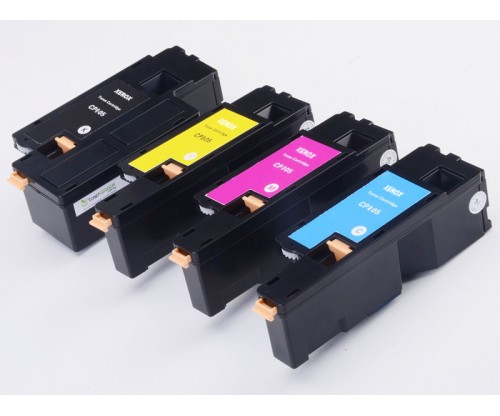When we want to purchase low-cost printer cartridges, we may hear the terms OEM, “remanufactured” and “generic” frequently. OEM should be easy to understand and it is about brand name toner or cartridges that carry the same brand name with the manufacturer, such as HP, Canon and Epson. Generic cartridges are new, but they are manufactured by different companies than the actual printer manufacturer. In this case, generic cartridges are new and compatible cartridges made by other companies. Cartridges and toner drums may need to be replaced by new ones, as well as other major components that need to be replaced. On the other hand remanufactured means that the cartridge or toner has been refilled, cleaned and services. In this case, refurbished components mean that the original drum should be sent out to specific manufacturer, which is not necessarily the original manufacturer for another cycle of remanufacturing.
It should be known that many “new” cartridges in the market are actually remanufactured items to some extent. An important thing we need to find out is to what degree these components have been replaced or repaired. Many of these supposedly new items may have materials and parts that are recovered from manufacturer’s recycling program. It means that those new cartridges are not completely new, because they are partially recycled. For many printer owners, the cost of cartridges are considered exceedingly high and they could choose remanufactured models that could cost 70 percent less than the OEM items. So, what’s the catch? It is obvious that choosing OEM and generic models would be an ideal thing to do, because they always come with warranty, even it is a one week warranty. On the other hand, it is more likely for refurbished models to get malfunctioned.
Generic cartridges are generally quite reliable, although they are not produced by the original manufacturer. It is especially true if the manufacturer adheres to ISO 9001 and complies to the latest technology. In many cases, generic cartridges are highly reliable, especially if they have been endorsed by companies like Canon and Epson. The technology needed to duplicate the quality of the OEM cartridges is obtainable by third-party manufacturers, However, it may be necessary to choose the best available cartridges when we want to proceed with high quality photographic printing. Refurbished cartridges or even some generic ones could have lower grade ink that doesn’t produce superior results or have the same brilliance and color density. Consistency of color is necessary and we should make sure that the ink is produced by reputable companies.
The same applies for toners used by laser printers. We should choose generic toners that comply with the ISO 9001 standards for increased reliability and consistency. Any generic toner endorsed by the original manufacturer should have reasonably long print life. On the other hand, remanufactured toner could have less stringent standards and they could be usable only for text printing, but probably not high quality image printing.

























